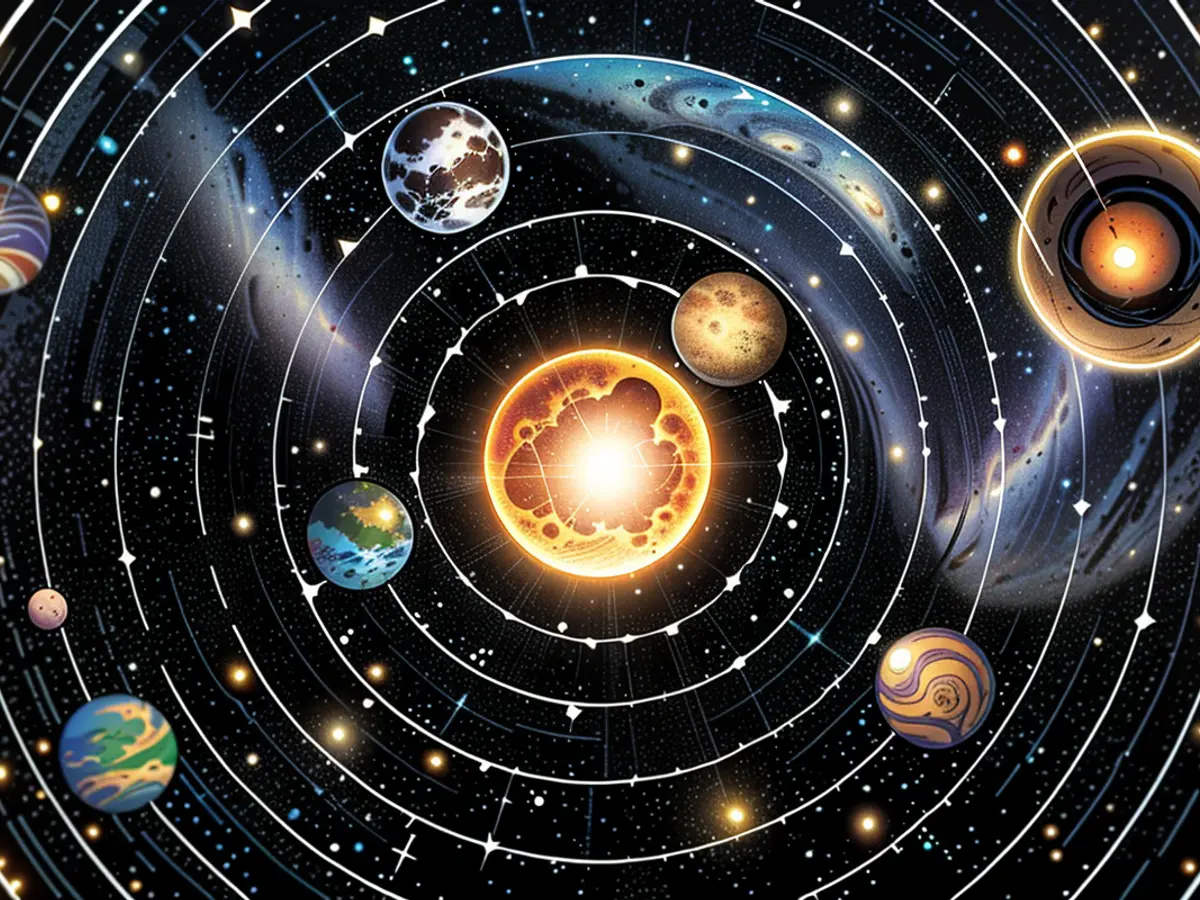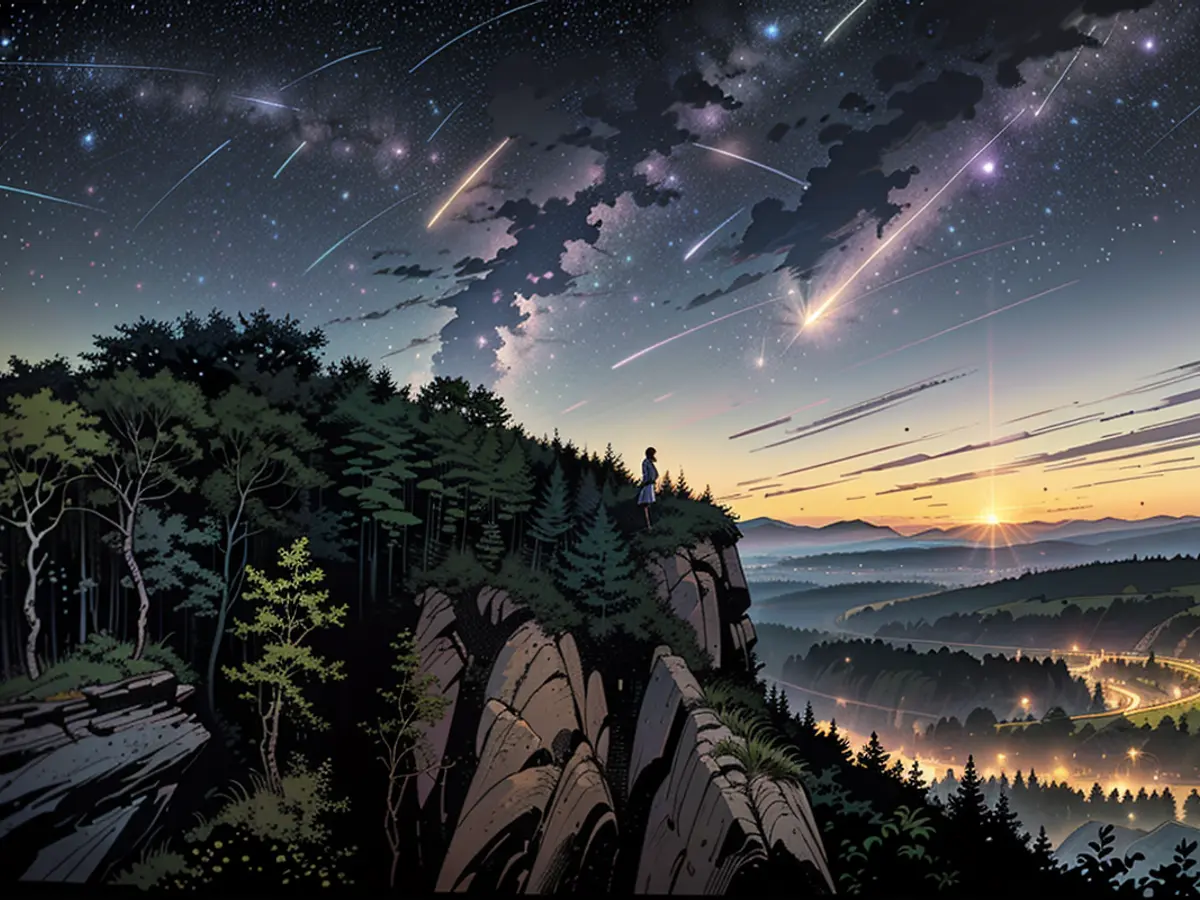The most beautiful shooting star of the year is coming
A look into the night sky in August is particularly rewarding for several reasons: The Perseid meteor shower can bring up to 100 shooting stars per hour. So-called fireballs are also expected. Moreover, the almost full moon will cover Saturn - a cosmic spectacle.
August begins with nocturnal sky sparkle: A large number of shooting stars is expected with the Perseid meteor shower. The peak will occur between August 9 and 13. Bright objects, so-called bolides or fireballs, are not uncommon.
The majority of meteors are expected in the morning hours of August 12. The Perseids are considered the richest and most beautiful meteor shower of the year, with up to 100 shooting stars per hour. The best time for observation is between 11 pm and 4 am.
With a speed of 60 kilometers per second, the Perseids are quite fast objects. At this speed, the journey from Earth to the Moon would take only 90 minutes. Most meteoroids vaporize in the Earth's atmosphere. However, there are exceptions, and some may impact the Earth's surface or fall into the sea. Very rarely, a meteorite may strike in densely populated areas.
Another remarkable celestial event: Moon and Saturn
There is another remarkable celestial event this month: The almost full moon will cover the planet Saturn. Our neighbor in the solar system will pass in front of the ringed planet in the early morning hours of August 21, covering it for an hour. Exact times depend on location. In Hamburg, the cosmic spectacle begins at 5:33 am, in Berlin at 5:34 am, in Düsseldorf at 5:31 am, in Leipzig at 5:30 am, and in Munich at 5:33 am.
About an hour later, the moon will release Saturn, and the ringed planet will reappear on the moon's western edge. The coverage is particularly impressive when viewed through a telescope, as the ring and planet disappear behind the moon's edge and reappear an hour later on the dark western edge of the moon.
Evening star period of Venus begins
Saturn in the constellation Aquarius will gradually become the planet of the entire night in August. At the beginning of the month, it rises around 10:30 pm, and by the end of the month, it rises half an hour after sunset. Venus appears in the evening sky and begins its evening star period. It is the first celestial body to be seen in the increasing evening twilight.
On August 4, Venus will pass north of Regulus, the brightest star in Leo. A day later, it will encounter the waxing crescent moon. By the end of August, Venus will cross the celestial equator in a southerly direction. Its settings will become earlier, from 9:46 pm at the beginning of the month to just before 9 pm at the end.
Mars is the planet of the second half of the night. It passes through the constellation Taurus and, at the beginning of the month, passes five degrees north of its brightest star, Aldebaran. In mid-August, the reddish Mars will pass north of the much brighter, white Jupiter.
Jupiter dominates the second half of the night. A pleasant celestial sight occurs on August 28 around 3 am: The waning moon joins Mars and Jupiter above the eastern horizon. Mercury will overtake Earth on its inner orbit on August 19, but the swift planet will remain invisible throughout the month.

Vega stands high in the sky
The Summer Triangle is now high in the south. The 25-light-year-distant Vega in the constellation Lyra can be seen almost vertically above our heads. Next to Lyra, the Swan spreads its wings. It is marked by a large star cross, also known as the "Northern Cross." Its brightest star, Deneb, marks the second corner of the Summer Triangle.
Deneb is the farthest of the bright stars of the first magnitude. Its distance measures 2500 light-years. It belongs to the so-called supergiant stars with almost 200 times the diameter of the Sun and a luminosity that corresponds to 50,000 times that of our Sun. Deneb thus counts among the largest and brightest stars in our Milky Way.
Vega, the third star of the Summer Triangle, forms the main star of the Eagle that is pouncing on its prey. At 17 light-years away, the Eagle star counts among the neighboring stars of our Sun.
The Big Dipper has descended towards the northwest, while in the northeast, the celestial W, Cassiopeia, is rising.
Moonlight hinders visibility of the Milky Way
The shimmering band of the summer Milky Way is only visible far away from terrestrial light pollution even in August. The softly glowing band of thousands of sparkling stars can therefore be observed by many people only rarely or never. Even moonlight hinders visibility.
New Moon is reached on August 4th at 13:13 UTC. Full Moon occurs on the 19th at 20:26 UTC in the constellation Aquarius. On the 9th, the Moon is at its farthest distance from Earth at 405,297 kilometers, while on the 21st, it is at its closest at 360,196 kilometers.
The Sun travels along the descending branch of its annual path and approaches the celestial equator. On the 10th, it leaves the constellation Cancer at midday and enters Leo, passing by its main star, the king star Regulus, on the 22nd. On the same day, it enters the zodiac sign Virgo in the afternoon.
The midday height of the Sun decreases by more than nine degrees, and the day length shortens by nearly two hours at 50 degrees north latitude.
The almost full moon on August 21 will cover Saturn, providing an hour-long cosmic spectacle. This celestial event is particularly captivating when viewed through a telescope, as Saturn's ring disappears behind the moon's edge and reappears an hour later on the moon's western edge.
Throughout August, Saturn in the constellation Aquarius becomes the planet of the entire night, gradually rising earlier each day until it rises half an hour after sunset by the end of the month.








